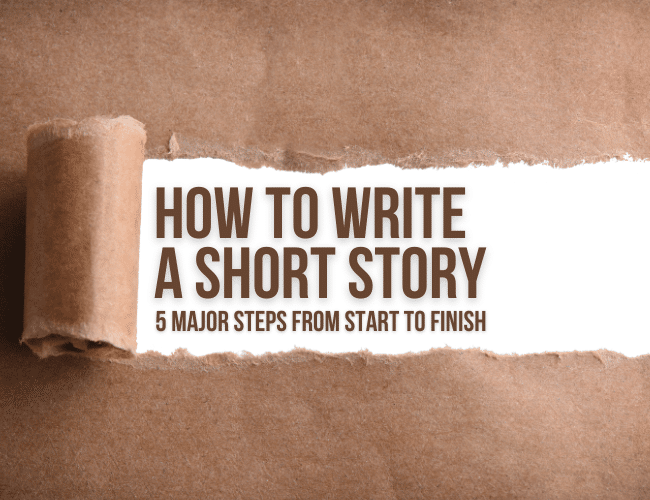So you’ve decided to write a short story. Maybe you’re craving a break from the commitment of a full-length novel. Or maybe you just want to hone your skills and get some quick wins under your belt. Whatever your reason, short stories offer a powerful training ground for writers—and often, they’re where great storytelling begins.
While novels allow for sprawling worlds and layered subplots, short stories are lean, focused, and intense. They’re a “slice of life” captured in just a few thousand words—but don’t let their size fool you. Crafting a compelling short story requires precision, creativity, and discipline.
Here’s your roadmap to writing a memorable short story, from first spark to final draft.

1. Start With the Right Mindset
Short stories are more than just shorter novels. They’re a discipline all their own.
Think of them as a compact scene—one to three scenes, tops—with a limited cast and a laser-focused plot. You don’t need extensive world-building, exhaustive character backgrounds, or winding subplots. What you do need is purpose: a clear sense of what your story is about and why it matters.
The beauty of short fiction is that it trains you to write with intent. Every word must pull its weight.
2. Write the First Draft in One Sitting
Yes, really.
Short stories are meant to be consumed in a single sitting—so why not try writing them the same way? For stories around 2,000 to 3,500 words (the sweet spot for most publications), it’s completely possible.
This doesn’t mean your first draft has to be perfect. Quite the opposite. Let your ideas flow without censorship. Forget about structure, polish, or even coherence for now. This is your raw material. Your goal is simply to finish the story.
Don’t stop to research. Don’t pause for the “perfect” word. Don’t worry if it’s good.
Just write.
3. Step Away (Seriously, Take a Break)
Once you’ve hit that final period, walk away.
This pause isn’t laziness—it’s essential. Let your story marinate. Give your brain time to shift gears from creator to critic. When you return to it, you’ll see things more clearly: the gaps, the redundancies, the awkward sentences you didn’t catch while in the writing zone.
A short break of two to three days works wonders. Use that time to refresh or research if needed—but avoid obsessing over the story. You’ll come back sharper.
4. Edit Ruthlessly With Brevity in Mind
Now comes the part where good writers are made: editing.
Short stories thrive on economy. Every word should serve a purpose. So when revising, channel your inner minimalist. Ask yourself:
- Does this detail move the story forward?
- Is this line necessary, or just clever?
- Is this backstory essential, or can it be implied?
Cut fluff. Tighten dialogue. Merge characters if needed. Kill your darlings, as the saying goes—even the beautiful ones.
And above all, make sure your story has structure. Even the shortest tale should have a clear beginning, middle, and end.
5. Get Feedback (From Writers, Not Just Friends)
This step can be intimidating, especially if you’ve never shared your writing before. But it’s critical.
The right feedback can transform your story. It highlights blind spots, catches inconsistencies, and offers fresh perspectives. Ideally, seek out critique from other writers—people who understand the craft and won’t sugarcoat their opinions.
Writing groups, online forums, and trusted beta readers are all great places to start. Your mom might love everything you write, but she’s not going to tell you your climax fizzled or your characters fell flat.
Once you gather feedback, reflect on it carefully. Don’t take everything to heart, but don’t dismiss it either. Make changes that strengthen your story, and ignore what doesn’t align with your vision.
6. Final Edit and Publish
After revisions, polish your prose. This is your chance to fine-tune grammar, fix punctuation, and ensure your story reads smoothly. Read it aloud. Print it out. Read it again. The goal is to catch anything that might trip up your reader.
Then—publish it.
Don’t let your story sit forgotten in a folder labeled “drafts.” Whether you submit it to a magazine, share it on your blog, or self-publish it in an anthology, put it out into the world.
Publishing builds confidence. It attracts readers. And most importantly, it gives your work the closure it deserves.
Why Bother With Short Stories, Anyway?
Still unsure if short stories are worth the effort?
Here’s the truth: short stories are training grounds. They sharpen your editing instincts, teach you structure, and force you to finish. They help you build a habit—and that habit is what separates dabblers from dedicated writers.
Plus, writing short stories helps you grow your network. When you publish, you meet editors, connect with readers, and make a name for yourself in writing circles. It’s how you build momentum.
Even if your ultimate goal is to write novels, short stories are like pushups for the writing brain. Small, focused, and powerful.
Final Thoughts
Writing a short story doesn’t have to be overwhelming. With clarity of purpose, a bit of discipline, and a willingness to revise, you can create something that resonates—something complete.
So grab your pen, carve out a few hours, and let a story unfold.
One scene. One character. One sitting.
And just like that—you’re a short story writer.


